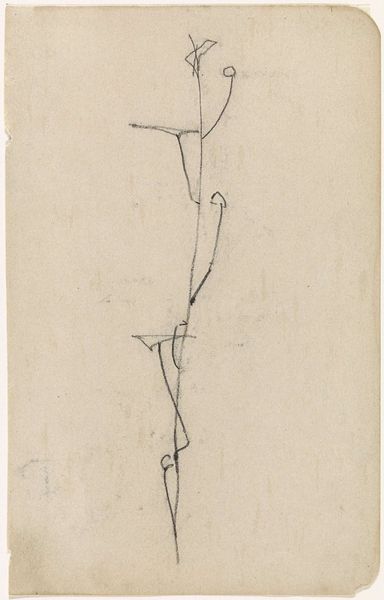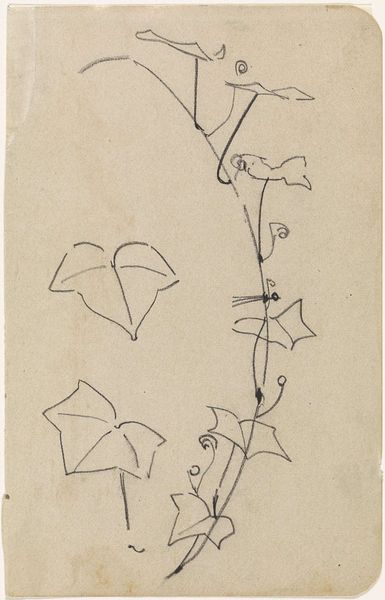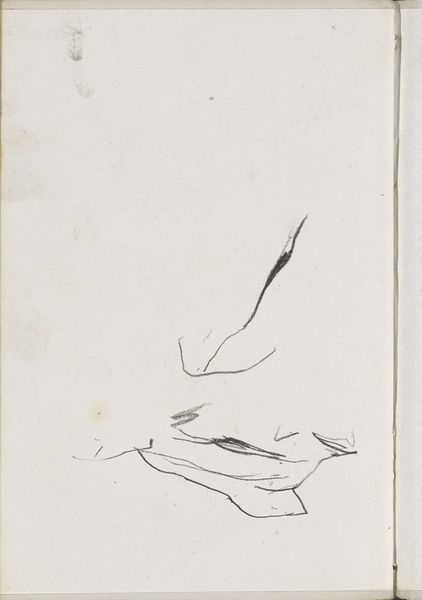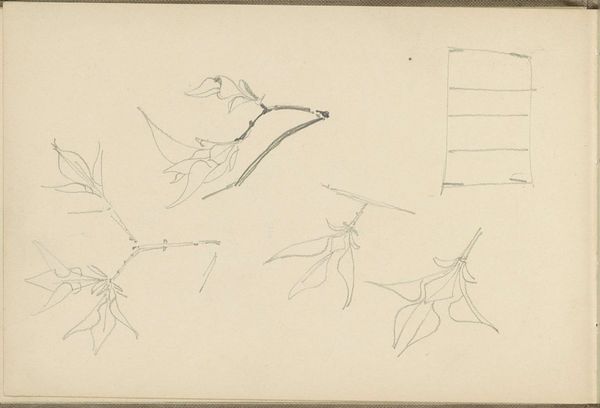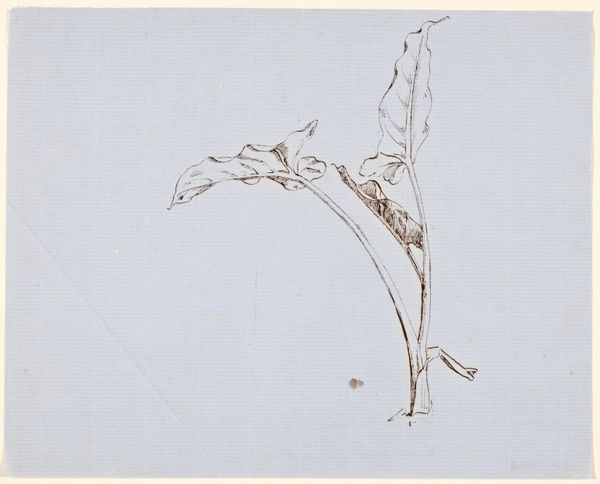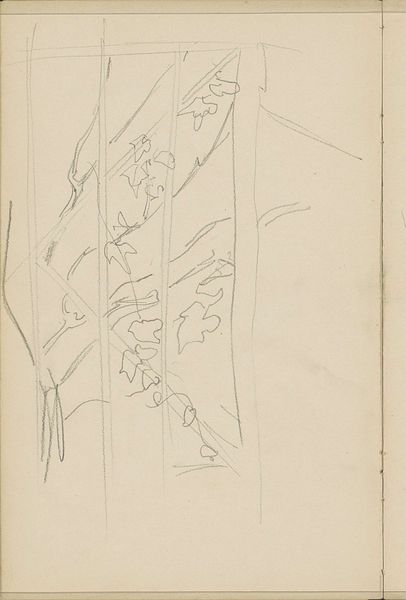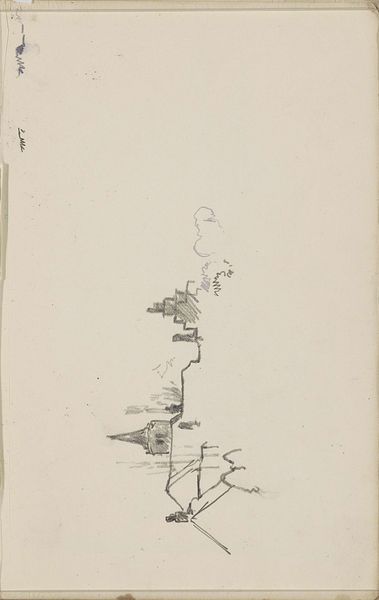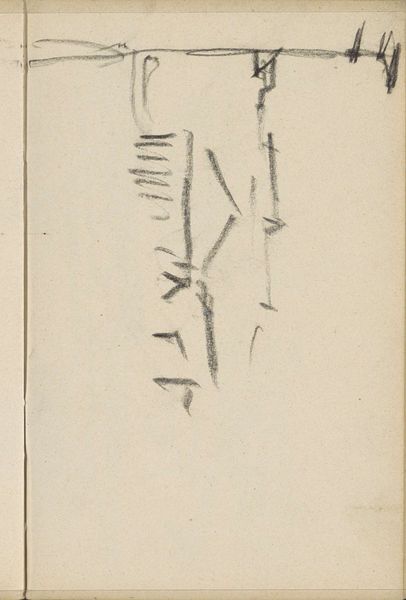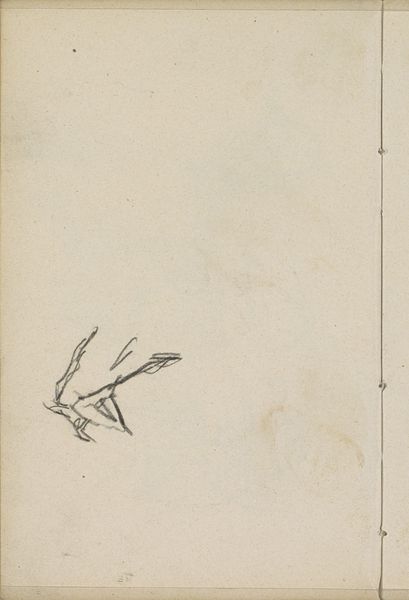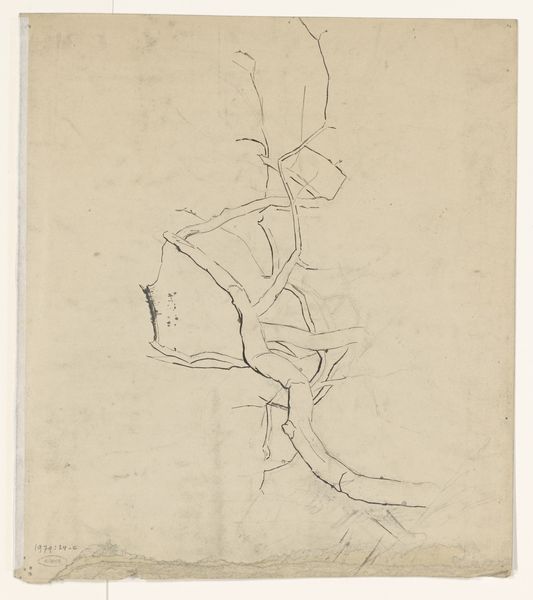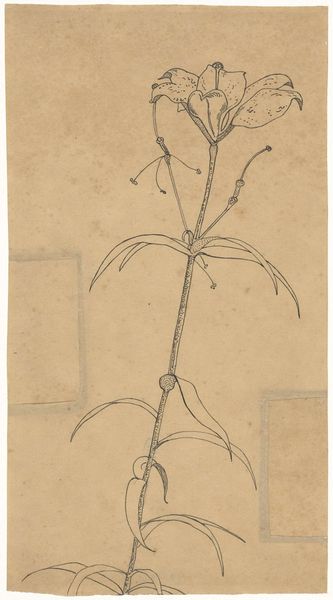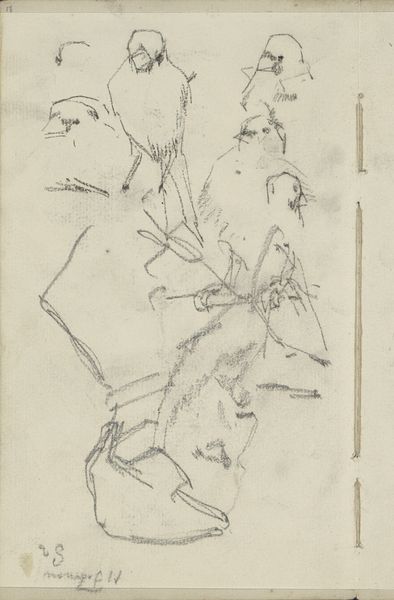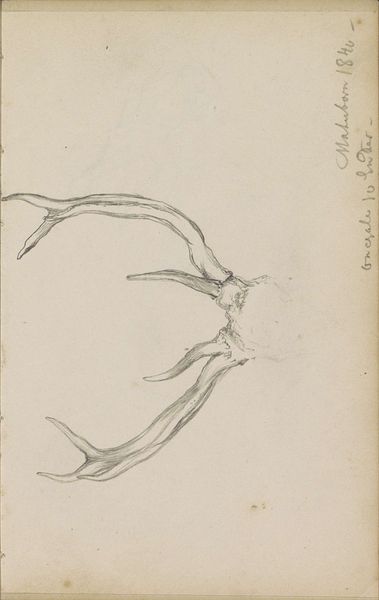
drawing, pencil
#
drawing
#
organic
#
pencil sketch
#
landscape
#
plant
#
pencil
#
realism
Dimensions: height 163 mm, width 104 mm
Copyright: Rijks Museum: Open Domain
Curator: Looking at this drawing, I'm immediately drawn to its simplicity. It's called "Sketch of Ivy," made sometime between 1876 and 1924 by Gerrit Willem Dijsselhof and it is currently housed in the Rijksmuseum. It seems like just a quick pencil study, doesn't it? Editor: It's more than that. The strategic, minimalist lines have great energy. I feel this drawing gets at something intrinsic about the essence of the plant, rather than trying to copy nature directly. But let's talk materials and what we can glean from that. Was the paper stock of consistent quality? Curator: It certainly would have been available, a decent drawing paper given his apparent interest in detail despite its loose nature. What's interesting to me is considering the context—the late 19th and early 20th century in the Netherlands. Botanical illustration had practical functions. Were there any relevant artistic trends influencing this? Editor: Stylistically, this reminds me of the directness you see in some realist botanical drawings. But if we examine this composition more deeply, and in terms of abstraction, there are some crucial aspects related to Dijsselhof. Note how he emphasizes sharp geometric angles for these ivy leaves. They almost feel stylized, as if referencing Japanese prints then en vogue. Curator: Interesting point. Dijsselhof engaged with arts and crafts practices and the ethics behind that kind of creative work, especially the printmaking trade. Perhaps this sketch wasn’t merely about depiction, but a first stage in a process. Could this study, through prints, find a broader appeal, given its accessibility in medium? Editor: Exactly. We could then compare his approach to natural form with symbolist concerns. His use of line here makes me think there is more here than surface or simple depiction. Curator: So you're suggesting the plant here acts as a vehicle, for ideas around craftsmanship, abstraction or perhaps Dijsselhof’s larger artistic goals during his career? Editor: Precisely. Through simple lines, a more subtle commentary takes root. Curator: Thinking about his printmaking work, seeing how the lines, which in drawing seem singular become something easily reproducible opens it up in interesting ways. Thanks for illuminating the form; it offers a nice counterbalance to my own materially-focused ideas!
Comments
No comments
Be the first to comment and join the conversation on the ultimate creative platform.
